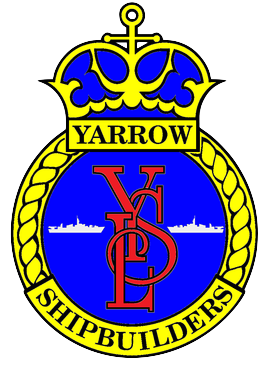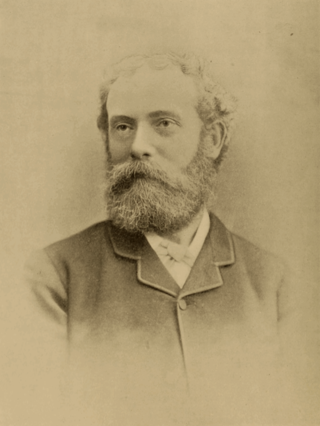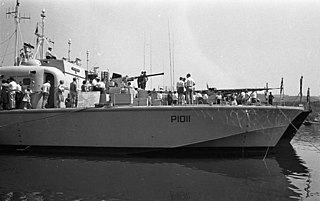
A torpedo boat is a relatively small and fast naval ship designed to carry torpedoes into battle. The first designs were steam-powered craft dedicated to ramming enemy ships with explosive spar torpedoes. Later evolutions launched variants of self-propelled Whitehead torpedoes.

The River class is a class of offshore patrol vessels built primarily for the Royal Navy of the United Kingdom. A total of nine were built for the Royal Navy (RN), four Batch 1 and five Batch 2. One Batch 1 (HMS Clyde), which was the Falklands guard ship, was decommissioned and transferred at the end of its lease to the Royal Bahrain Naval Force.

A motor torpedo boat is a fast torpedo boat, especially of the mid 20th century. The motor in the designation originally referred to their use of petrol engines, typically marinised aircraft engines or their derivatives, which distinguished them from other naval craft of the era, including other torpedo boats, that used steam turbines or reciprocating steam engines. Later, diesel-powered torpedo boats appeared, in turn or retroactively referred to as "motor torpedo boats" for their internal combustion engines, as distinct from steam powered reciprocating or turbine propulsion.

Yarrow Shipbuilders Limited (YSL), often styled as simply Yarrows, was a major shipbuilding firm based in the Scotstoun district of Glasgow on the River Clyde. It is now part of BAE Systems Surface Ships, owned by BAE Systems, which has also operated the nearby Govan shipyard since 1999.

The Algerine-class minesweeper was a large group of minesweepers built for the Royal Navy (RN) and the Royal Canadian Navy (RCN) during the Second World War. 110 ships of the class were launched between 1942 and 1944.

Sir John Isaac Thornycroft was an English shipbuilder, the founder of the Thornycroft shipbuilding company and member of the Thornycroft family.

John I. Thornycroft & Company Limited, usually known simply as Thornycroft was a British shipbuilding firm founded by John Isaac Thornycroft in Chiswick in 1866. It moved to Woolston, Southampton, in 1908, merging in 1966 with Vosper & Company to form one organisation called Vosper Thornycroft. From 2002 to 2010 the company acquired several international and US based defence and services companies, and changed name to the VT Group. In 2008 VT's UK shipbuilding and support operations were merged with those of BAE Systems to create BVT Surface Fleet. In 2010 remaining parts of the company were absorbed by Babcock International who retained the UK and international operations, but sold the US based operations to the American Jordan Company, who took the name VT Group.
VT Group is a privately held United States defense and services company, with its origins in a former British shipbuilding group, previously known as Vosper Thornycroft. The British part of VT Group was integrated into Babcock International in the early 2010s. In July 2012, The Resolute Fund II, LP, an affiliate of The Jordan Company acquired VT Group.

HMS Tyne is a River-class offshore patrol vessel built by Vosper Thornycroft in Southampton for the Royal Navy to serve as a fishery protection unit within the United Kingdom's waters along with her two sister ships Mersey and Severn. All three were commissioned into service in 2003 to replace the five older Island-class patrol vessels.

HMS Severn is a River-class offshore patrol vessel of the Royal Navy. Named after the River Severn, the ship is the first to bear the name in 56 years. She was built by Vosper Thornycroft in Southampton, England, to serve primarily as a fishery protection unit within the United Kingdom's waters along with her two sister ships Mersey and Tyne. All three were commissioned into service in 2003 to replace the five older Island-class patrol vessels. The ship was decommissioned in 2017, but the Government decided to recommission her as part of Brexit preparedness. She returned to service in 2020 and was recommissioned into the Royal Navy on 28 August 2021.

The Archer class is a class of patrol and training vessel in service with the United Kingdom's Royal Navy, commonly referred to as a "fast training boat". Most are assigned to Coastal Forces Squadron. HMS Tracker and HMS Raider are armed and provide maritime force protection to high value shipping in the Firth of Clyde and are most commonly employed as escorts for submarines transiting to Faslane. Pursuer and Dasher were also armed during their deployment on maritime force protection duties with the Gibraltar Squadron from 2020-2022.

The Brave-class fast patrol boats were a class of two gas turbine motor torpedo boats (MTBs) that were the last of their type for the Royal Navy (RN) Coastal Forces division. They formed the basis for a series of simpler boats which were widely built for export.
Fleet Support Limited (FSL) is a British company formed to run HMNB Portsmouth's Fleet Maintenance and Repair Organisation (FMRO) on a commercial basis. The FMRO was an agency of the Ministry of Defence responsible for repair and maintenance of Royal Navy vessels. FSL performs this task but also undertakes commercial work such as shiprepair, refitting, conversion and hull fabrication. FSL also carries out heavy engineering work and nondestructive testing for the marine and engineering sectors.

Coastal Forces was a division of the Royal Navy initially established during World War I, and then again in World War II under the command of Rear-Admiral, Coastal Forces. It remained active until the last minesweepers to wear the "HM Coastal Forces" cap tally were taken out of reserve in 1968. The division received more gallantry awards than any other branch of the Royal Navy during that period.

Coastal Motor Boat was a small high-speed British torpedo boat used by the Royal Navy in the First World War and up to end of the Second World War.
BAE Systems Maritime – Naval Ships is a wholly owned subsidiary company of BAE Systems, specialising in naval surface shipbuilding and combat systems integration. One of three divisions of BAE Systems Maritime, along with BAE Systems Submarines and BAE Systems Maritime – Maritime Services, it is the largest shipbuilding company in the United Kingdom, one of the largest shipbuilders in Europe, and one of the world's largest builders of complex warships.
Trafalgar Wharf is a shipyard in Portsmouth accommodating marine engineering businesses ranging from sailmakers and boat brokers to boat builders. It was formerly the VT Halmatic shipyard, owned by VT Group and latterly by BVT Surface Fleet. In November 2023 the site was acquired by Premier Marinas who also operate Port Solent marina opposite.

The Gay class were a class of twelve fast patrol boats that served with the Royal Navy from the early 1950s. All were named after types of soldiers or military or related figures, prefixed with 'Gay'. The class could be fitted as either motor gun boats or motor torpedo boats, depending on the type of armament they carried.
BAE Systems Maritime – Maritime Services is a wholly owned subsidiary company of BAE Systems, specialising in the repair and maintenance of Royal Navy vessels, as well as product development, naval training and through life support for radar, torpedoes and small boats. Along with BAE Systems Maritime – Submarines and BAE Systems Maritime – Naval Ships, it is one of three divisions of BAE Systems Maritime.

Splinter fleet or Splinter navy was a nickname given to the United States wooden boats used in World War II. The boats served in many different roles during the war. These boats were built in small boatyards on the West coast and East coast, Great Lakes and the Gulf of Mexico. They could be built quickly, in just 60 to 120 days. Most of the boats were built by boatyards that already had the tools and knowledge from building yachts, sailboats and motor boats. Many were built by craftsmen in family-owned small businesses. Under the Emergency Shipbuilding Program and War Shipping Administration contracts went out to over fifty boatyards across the country. The boats were built for the US Navy, the United States Army Air Forces, United States Coast Guard, and US Army. Some of the wooden boats went to Allied nations on the Lend-Lease program.
















